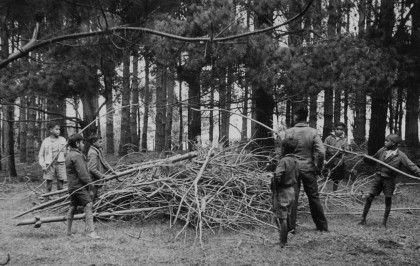
Author: Public Record Office Victoria
Victoria’s first Aboriginal missions and reserves were set up in the 1850s and 1860s by missionaries and colonial authorities. These administrators believed segregation could shield Aboriginal people from the negative effects of colonisation.

Rules and regulations
Rapid white settlement of the Port Phillip District from 1834 devastated the Aboriginal population. European farming on traditional lands, as well as violence and introduced disease, severely weakened and scattered tribes.
The Aborigines Protection Act 1869 required Aboriginal people to live on one of six reserves, where rules and regulations shaped their daily life. To earn their ‘upkeep’, men did manual labour, while women and older children performed domestic duties. They were often paid with rations rather than wages.
Regulations governed where Aboriginal people could live. A reserve manager or the Board for the Protection of Aborigines could decide to move a person from one station to another. This was distressing for people who were separated from family or unable to live where they wished.
Daily Life Community and Identity
Mission life was generally restrictive and often monotonous, although the character of the station manager and his relationships with residents could make a difference. Reverend John Bulmer, manager at Lake Tyers until 1908, encouraged traditional hunting and fishing to supplement rations. Residents also made artefacts to sell to tourists visiting the picturesque Gippsland lakes.
At first, reserves tried to be self-supporting through agriculture. Hop production flourished at Coranderrk (near Healesville) in the late 19th century. But lack of funds, a shifting workforce that relied on outside wages, and a growing perception of reserves as welfare institutions, eventually caused these initiatives to fail.
Despite these hardships, the stations were a source of community identity and connection, and a base for organised campaigns to win civil and land rights.
Government Records in Victoria Open for Viewing
Government officials began to create records about Aboriginal people from the earliest years of European settlement in Victoria. Many of these documents, dating from the 1830s to the 1970s, are now held in the state and commonwealth government archives and available for viewing. They are a rich resource for researchers and genealogists seeking to connect with family and country.
Want to know more?
Koorie Records Unit
The Koorie Records Unit at Public Record Office Victoria offers a dedicated service for Aboriginal people wishing to access records.
A Koorie Reference Officer can help you find and obtain copies of records that relate to you, your family and community.
For more information, click here or contact the Koorie Records Unit directly on:
phone 9348 5600
email koorie.records@prov.vic.gov.au
Material in the Public Record Office Victoria archival collection contains words and descriptions that reflect attitudes and government policies at different times which may be insensitive and upsetting
Aboriginal and Torres Strait Islander Peoples should be aware the collection and website may contain images, voices and names of deceased persons.
PROV provides advice to researchers wishing to access, publish or re-use records about Aboriginal Peoples
